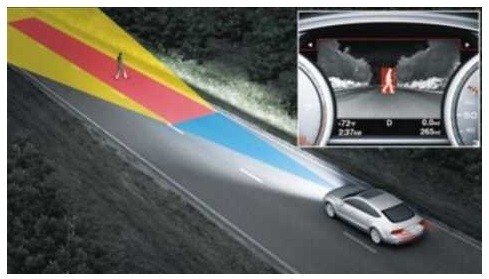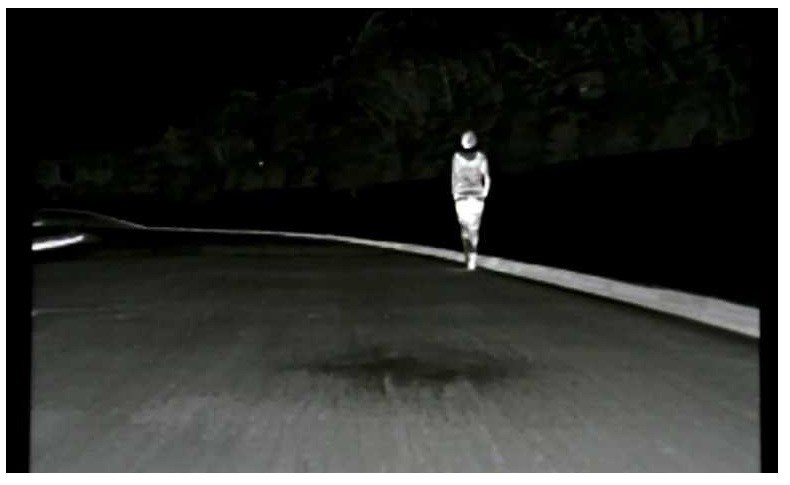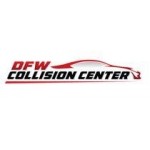Safer and Cutting-Edge: Night Vision with Pedestrian Detection
 Possibly the coolest feature of the new BMW 7-Series sedan – which does not lack for super tech optional gadgets -- is the new night-vision system that can shed enough light on a twilight drive that it resembles a commando raid. At DFW Collision Centers Arlington, we respect the newest technology in today's modern vehicles and hopefully we will soon be able to see a few of these beauties here in Arlington, TX.
Possibly the coolest feature of the new BMW 7-Series sedan – which does not lack for super tech optional gadgets -- is the new night-vision system that can shed enough light on a twilight drive that it resembles a commando raid. At DFW Collision Centers Arlington, we respect the newest technology in today's modern vehicles and hopefully we will soon be able to see a few of these beauties here in Arlington, TX.
The Night Vision with Pedestrian Detection system adds people-detecting technology that can discern between humans and animals. It was developed by Autoliv Electronics of Sweden and is the next evolutionary technological step offered by Lexus and Mercedes-Benz since Cadillac’s 2000 Deville sedan introduced it to the automotive sector.
Component prices have dropped since earlier models sold for about $3,000, but they’re still not available for less than $2,000. This will likely change, though, with prices possibly eventually dropping as low as $500 for a no-frills unit.
Passive far-infrared systems are usually mounted on the grille and scan for heat, while near-infrared systems project light onto the road. The active night vision system, on the other hand, can be mounted higher – in the rear-view mirror, offering a better view, but, rain, snow, fog and distance reduce its range – it's most profound downside – though the range is still about two football fields long.
Some models fuse both passive and active systems. The latest systems use algorithms that can tell whether an infrared hot spot is something living, and then swivel a headlight element to alert the driver — and whatever’s in the road. But it is not without its problems.
The $2,600 option does not replace the headlights, but is “another set of eyes,” sharply illuminating 1,000 feet of pavement – roughly twice the headlights’ range – which can make the difference between avoiding that cow or totaling your car. 
The system converts infrared camera data into an image that appears on the dashboard’s navigation display. Warmer objects (like living things) appear as white, while cooler ones like parked cars appear black – kind of like photographic negatives. The pedestrian-detection feature kicks in when speeds exceed 25 mph. The system also monitors trajectory and warn you if you’re on a collision course. Some even sound an alert. The passive systems claim a range of up to 1,000 feet – more than 10 seconds of travel time at 60 mph -- and they work better in foggy or rainy conditions.
Stats suggest improved night vision would likely reduce vehicle VS pedestrian crashes, which comprise 4,000 of the 32,000 annual U.S. traffic fatalities, and seven in 10 of those are at night. One in 20 U.S. crashes involves animals – with a million vehicle Vs deer crashes annually accounting for 200 human fatalities and 25,000 injuries.
These gadgets are expensive, and other safety basics like blind spot detection, forward collision warning, and lane-departure warning, are probably more important and definitely much cheaper. Most important, though, is that the night vision detection-and-warning features work, and could save a life.
Sources: TechNews, CNN and Forbes









 Possibly the coolest feature of the new BMW 7-Series sedan – which does not lack for super tech optional gadgets -- is the new night-vision system that can shed enough light on a twilight drive that it resembles a commando raid. At DFW Collision Centers Arlington, we respect the newest technology in today's modern vehicles and hopefully we will soon be able to see a few of these beauties here in Arlington, TX.
Possibly the coolest feature of the new BMW 7-Series sedan – which does not lack for super tech optional gadgets -- is the new night-vision system that can shed enough light on a twilight drive that it resembles a commando raid. At DFW Collision Centers Arlington, we respect the newest technology in today's modern vehicles and hopefully we will soon be able to see a few of these beauties here in Arlington, TX.
Social